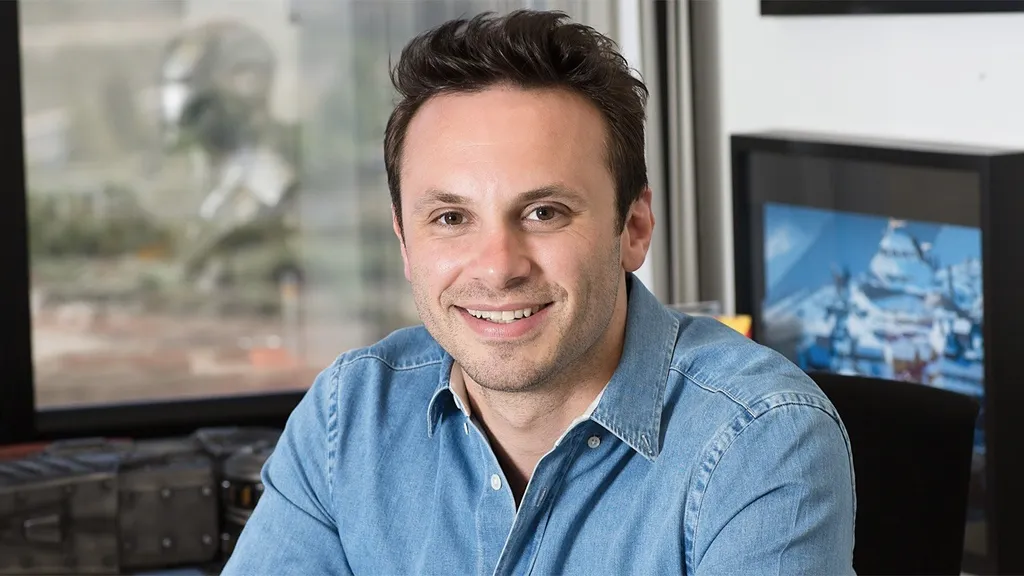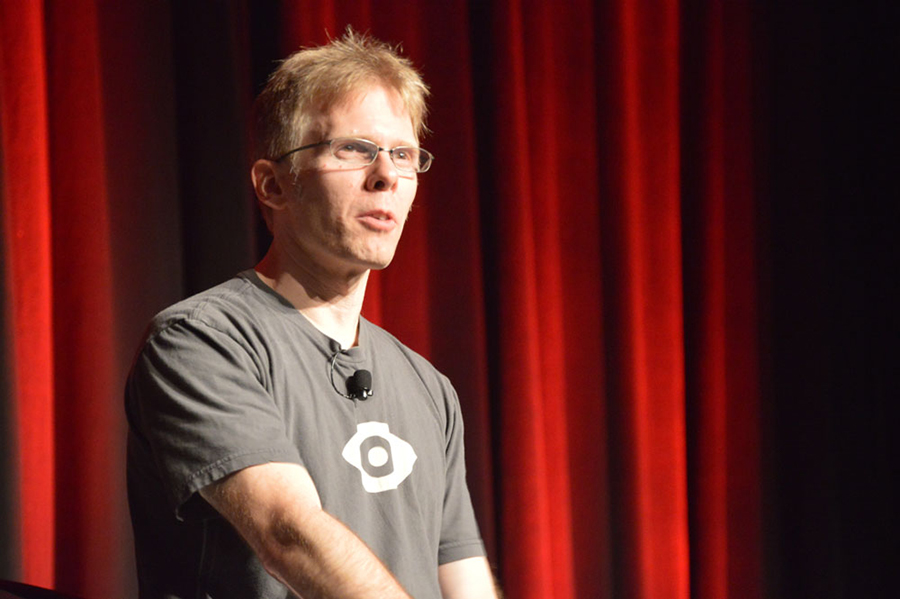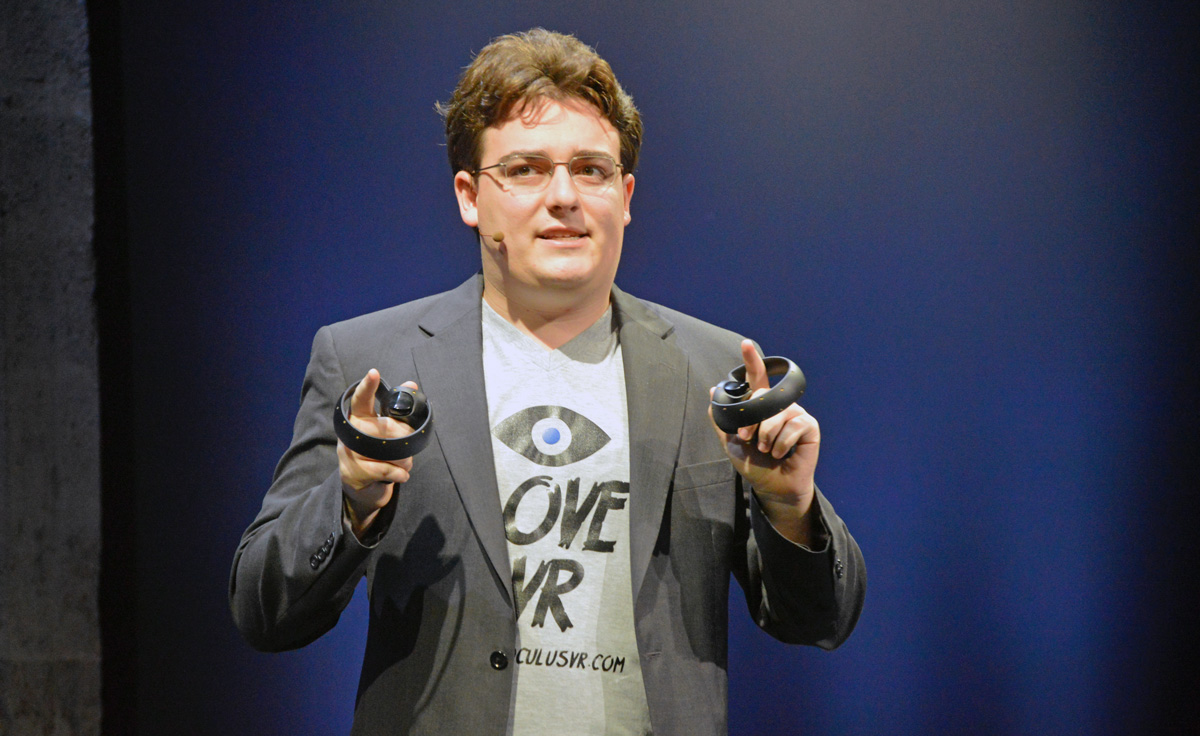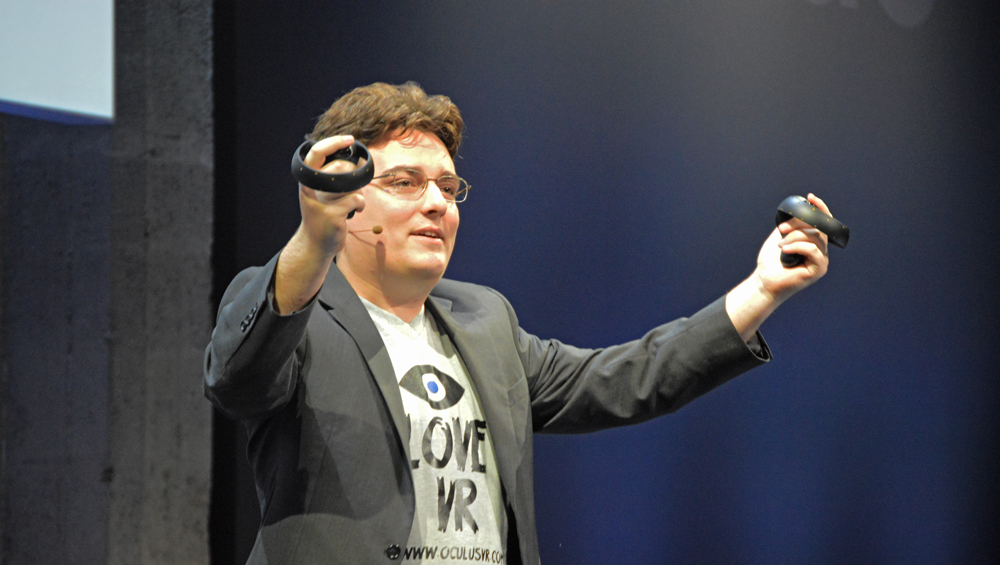Following Mark Zuckerberg’s appearance earlier this week, Oculus founders Palmer Luckey and Brendan Iribe answered questions in the company’s ongoing legal battle with ZeniMax Media over the alleged theft of VR technology.
Luckey got into the nitty-gritty details about the origins of the Oculus Rift and more on Wednesday.
Luckey faced questions from both prosecution and defense. The 24-year-old went in-depth on his account of the origins of the Rift, building early prototypes in 2012, and his collaboration with John Carmack, who was then working at ZeniMax subsidary id Software. Alongside his answers, Luckey often expressed concern with the amount of context provided by the prosecution lawyer, noting on several occasions that he was “just trying to be clear.”
An NDA signed by Luckey concerning the use of ZeniMax’s own tech was brought up. As the lawyer read out segments of the document, Luckey pointed to parts not mentioned. “I can’t answer your question accurately when you leave out seven or eight words,” he said of emails he had sent during this time, as reported by Gizmodo.
Luckey also said that, as far as he could remember, he told Oculus co-founder about the NDA, stating that any contradictions between what he had just said and what he stated at a deposition in January 2016 were due to the amount of time that had passed.
“I could be incorrect because it’s been a year, and this has been a long, long, process,” he said.
In discussions regarding Carmack’s contributions to the startup, ZeniMax and Oculus talked about options for working together. At one point, Oculus offered 2 percent of the company and the chance for ZeniMax to invest further in exchange for Carmack working as an advisor. ZeniMax allegedly wanted 15 percent and terms that would ensure the ownership stake couldn’t be diluted as Oculus sought further investment. Luckey said the demand was “out of the blue”.
The defense sought to protect Luckey’s status as the creator of the Rift and a capable engineer, which ZeniMax’s 2016 complaint called into question. After explaining his reasoning for being home schooled (he couldn’t concentrate in the classroom), Luckey said he started “seriously working” on VR when he was “15 or 16”, and learned the history of the tech through “academic literature”, finding out “what had worked” and “what had not”.
To back up those claims, Luckey gave a detailed run down of the first prototypes of the Rift, which he started making after purchasing other headsets.
He detailed four prototypes he made, the last of which he showed at a USC Lab in January 2012, where he worked as a technician. Also referenced was his work with Nonny de la Peña, a journalist making her own VR tech to tell stories. Luckey joined her for the 2012 Sundance Film Festival, where her piece, Hunger in Los Angeles appeared on a rudimentary headset allowing for six degrees of freedom movement. It was not the Rift, though Luckey said the piece could have run on his headset “to a certain degree.”
Questioning then turned back to Luckey’s early relationship with Carmack. He had come into contact with Carmack via the Meant To Be Seen 3D forums.
“He was the highest profile person interested in what I was doing,” Luckey said of the decision to send a prototype to the developer, “and I was flattered.”
On April 4th 2012, Carmack would post his findings from using the kit on the same forums, where he stated he would be “giving several demos in the next month”. Luckey stated he then made an SDK to address concerns listed in that post.
At E3 2012 a few months later, Luckey said some media inaccurately attributed credit for the prototype to Carmack and not himself. An email from Carmack shortly before the show expressed concern that Luckey would be “short-changed” with him demoing the device. A month later, Luckey hosted a VR panel at QuakeCon along with Carmack and Abrash, where Doom 3 was displayed on the prototype Rift.
Despite Carmack demoing Doom 3 on the kit, Luckey claimed he had never been given access to its source code. As for later uses of Doom 3, Luckey said he obtained footage of the game from “public sources”. He also said he had not left executable files or a headset with Valve after a meeting.
Following discussion about the nature of Oculus’ Kickstarter, an email from Luckey was produced containing the phrase “It is better to beg for forgiveness than ask for permission.”
“Is that how Oculus runs its business?” the lawyer asked.
“No, generally speaking,” Luckey replied.
Brendan Iribe who, until recently was Oculus’ CEO, started answering questions next. He said he had been at E3 in 2012, though not with Oculus (he worked for game streaming company Gaikai at the time), and he didn’t see the Rift demo.
Questioning was largely concerned about his relationship with Luckey, which began at a meeting for dinner at a steak house in Los Angeles. Iribe gave Luckey less than $5,000 as part of an effort to convince him to do business with him and start the company. He said that while he wouldn’t call himself an expert in VR, Luckey was.
Luckey’s NDA with ZeniMax was then called into question, which Iribe said had been mentioned either in late 2012 or early 2013, and had then been forgotten about again. Iribe wasn’t sure if it was mentioned once more around the time of the Facebook acquisition in 2014, later adding that someone might have “remembered the NDA during due diligence.”
Questioning continued to suggest code written by Carmack could have been used in the Oculus SDK, with Iribe countering that emails noted ZeniMax might not co-operate, and that Carmack’s advice was not necessarily the advice they always agreed with.
“This is valuable technical advice given under an NDA so you could write your SDK,” the lawyer said. Iribe replied that he sees no problem in taking such advice.
Wednesday’s time in court wrapped up with additional questions surrounding Carmack’s involvement with the Oculus team as the SDK was developed. The trial continues today.
Editor’s Note: This post has been updated with additional information surrounding investment discussions between ZeniMax and Oculus. Writer Garrett Glass is in a Dallas courthouse following what’s going on for UploadVR, though the use of electronic devices is restricted and live-tweeting not allowed. Stay tuned for more updates as the case continues.





























